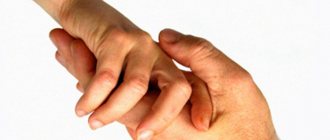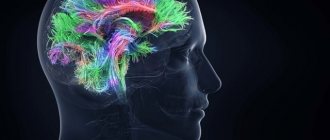/ Narcology news / Drug addiction in children and adolescents
Children's drug addiction: features of the onset of addiction, the first signs of the disease, drug treatment of the condition.
Drug addiction among young people is an acute social problem of our time. Every parent believes that this problem will never be associated with their children. The specificity of teenage drug addiction of various age groups lies in protest against others and an attempt to “solve” their problems in an adult way.
Causes of drug addiction in teenagers
Not every child or teenager can fall under the bad influence of peers and use drugs for fun. Drug addiction among young people is the province of the age group from 12 to 27 years. This is due to the fact that adolescence is a turning point and formative period in the psycho-physical and somatic development of children.
There is a conventional hierarchy of reasons for the development of drug addiction: socio-cultural aspects, psychophysiological characteristics, personal factors. The first group includes a change in status in society for a teenager. The reason for socio-cultural factors includes the denial of drug addiction: “I’m not a drug addict”, “I can easily quit”, “I don’t need help”, “it’s not harmful”, “even doctors treat weed with weed”, etc., according to this Children treat alcohol the same way. Psychophysical aspects include the absence or insufficient level of self-control, a sense of desire for everything new. In such conditions, children become drug addicts without realizing their responsibility in choosing life and moral behavior. Personal factors include the relationship between parents, other family members, teachers, classmates, neighbors, friends and children of drug addicts. This is how teenage drug addicts try to dull their emotional pain and feelings.
Reasons for the development of addiction in adolescents
Risk factors that may cause a teenager to become interested in illicit drugs may vary. It is important for parents to remember that a drug problem can come into a family with any relationship, level of trust between loved ones and social status or income.
In medicine, there are two groups of factors influencing the formation of drug addiction, these are social and psychological reasons. A separate category includes physiological influence factors characteristic of drug addiction and not so common drug addiction.
The group of social factors includes a lack of trust in the family or attention to the child from the parents. Children growing up in a socially disadvantaged environment often fall under negative influence and try alcohol, soft drugs, and such hobbies eventually transform into addictions.
Psychological factors of drug addiction are provoked by emotional reactions to communication with friends, including attempts to self-actualize and gain status. A teenager does not want to feel like an outsider in a company, strive to prove his importance to his peers and get rid of complexes.
During the treatment process, the teenager ends up in rehabilitation centers , where an integrated approach to organizing therapy is used. One of the main stages is the identification of factors in the formation of addiction and their neutralization, psychotherapeutic work with patients.
Features of teenage drug addiction. Children's alcoholism and drug addiction
Adolescent drug addiction is associated with maximalism in relation to the surrounding world in this age group. Why do children become drug addicts? The problem lies in the mass character or “herd instinct” of young people, the annual rejuvenation of drug addiction. Drug addiction among adolescents is characterized by a rapid transition from mild psychotropic drugs (barbiturates, synthetic tranquilizers, hemp and derivatives, marijuana) to heavier groups of drugs, including medications (heroin, ecstasy, morphine, cocaine). A teenager may purchase an expensive drug and be forced to resort to artisanal methods of producing psychotropic drugs. Such pseudo drugs have a degenerative effect on the cerebral cortex and the body as a whole in a short period of time, quickly leading to death. The child is forced to secretly receive the necessary doses of narcotic drugs from adults, so he takes large doses at once.
Drug addiction among young people from antisocial groups of the population never occurs in isolation from alcohol.
Children's bodies get used to drugs very quickly. This is facilitated by the structural features of the child’s body. Drug addiction in adolescence knows no limits on the amount of alcohol consumed and the amount of drugs taken. It is normal for teenagers to go on a binge, to take drugs uncontrollably, and sobriety for them is an incomprehensible state where there is responsibility, duty and responsibilities. Complete intoxication provides young people with false ease and self-confidence. Drug addiction among young people has a malignant course. The reaction of the body's resistance to the effects of narcotic drugs in puberty is reduced, since during this period the final formation of the nervous, cardiovascular, endocrine and other systems occurs.
The effect of drugs on the teenage body
Self-esteem problems
Teenage groups are often formed according to the principle of a rigid hierarchy, and therefore, in addition to the status members of the group, there are always outsiders. It is the teenager’s involvement with less authoritative members of the group or being outside of it that can become an incentive to acquire and use a drug. In this case, the teenager takes drugs in front of witnesses, comes to school in a state of drug intoxication, or commits another demonstrative act - in his opinion, this can increase his personal status in the eyes of his peers. In addition, by doing this, he feels more mature, strengthening his false positive self-esteem.
Family atmosphere and education methods
Rebellion was initially built into the profile of this age period, therefore, by using drugs, many teenagers show a kind of protest against too strict and harsh methods of education. Of course, this does not happen instantly - usually children first stage acts of disobedience, do not follow established rules, and demonstratively violate discipline at school or at home. The permissive style of parenting, which is often practiced in families where parents are addicted to alcoholic beverages, also falls into this category - the child begins to manage the given freedom in his own way. Therefore, two sides of the same coin can easily lead to the same result.
Research instinct
Children are curious, and that's a fact. But at first they are interested in what will happen if you stick your finger in a pan of boiling water, and after a decade and a half - what will happen if you smoke a joint. This is a completely standard mechanism, as a result of which the first experience of drinking or smoking cigarettes appears. And drugs are no exception here; besides, it is unlikely that a child will think about heroin injection as a first experience, but using amphetamine, spice or marijuana is more than likely. If this happens, then this can also be attributed to the pedagogical miscalculations of the parents, who did not promptly explain to their son or daughter the full danger of such experiments.
Imitation
Public opinion is important for a teenager - it is an integral attribute of the process of growing up. Therefore, when the opinion is formed that being drunk or “getting screwed” is cool, it is difficult to resist it. As a result, preparing for a trip to a school disco may not involve buying new sneakers, but looking for a “bookmark” in the area. Unfortunately, such a motive in the future turns out to be long-term and for many years a person, before going to a club or party, will practice various ways to change his perception of reality - the state of joy without doping becomes inaccessible to him.
Signs of addiction in a teenager
If we talk about moments in a child’s behavior that can become indicators that he is using one or another psychoactive substance, then a lot depends on the stage of development of addiction and what drug is used. Each psychotropic has its own characteristic symptoms - from behavioral characteristics to physiological reactions. But there are a number of general signs that a child may be using drugs.
Appetite problems
In this matter, much depends on the drug used - in most cases, taking stimulants is accompanied by an appetite disorder, when a teenager may forget about food for more than a day. If we are talking about smoking marijuana, then in this case the appetite can be more than full, even to the point of gluttony - all the contents of the refrigerator are in danger of being destroyed. This discrepancy in the body’s reactions is due to the effect of psychoactive substances on various receptors that stimulate the production of hormones that provoke such polar reactions when feeling the degree of hunger.
Changing behavior
In most cases, drug use at this age is associated with company - it is unlikely that a teenager will use psychoactive substances while alone. Individual use may be characteristic of already formed drug addicts in adulthood, but for children it is more of a collective activity, when it is more important not so much to take a surfactant, but to discuss the experience gained and show their peers their courage. As a result, the child begins to spend less time with the family, answer questions about pastime evasively, and ask for money more often.
If we are talking about drug use on a systematic basis, then this manifests itself in the emotional sphere - the teenager becomes more irritable than usual, his mood rapidly changes. He may also demonstrate behavior characteristic of drug intoxication - increased talkativeness, lethargy, aimless activity, easy switching of attention, forgetfulness.
Contact isolation
Teenagers often demonstrate social phobia towards family members, relatives and friends of their parents who come to visit - it reaches the point of absurdity when the child comes up with absolutely ridiculous excuses not to maintain contact. However, at the same time, he willingly communicates with friends - both on the phone and in person. In this case, various code phrases are often used, which, as teenagers believe, do not arouse suspicion among their parents. Already such behavior should involuntarily make adults think that the child may have secrets that he carefully hides. Even if we are not talking about drugs, such family communication is difficult to recognize as normal.
Changing vocabulary
Any drug has several names - in addition to the generally accepted designation, there are also many slang names. At the same time, only marijuana can be designated in a conversation with a good dozen well-known words, not to mention the fact that in a group of teenagers they can use their own terminology. Therefore, it is worth paying attention to what words appear in the child’s dialogues with his peers.
Appearance
If a child dyes his hair purple and gets facial piercings, he shouldn't be blamed for an advanced drug addiction, but changes in his appearance usually serve as indicators of situations that require attention. In addition to clothes with long sleeves, which hide your hands even in thirty-degree heat, alarming signs may include:
- disregard for hygiene rules and general sloppiness
- change in the condition of the hair - it becomes excessively dry
- unhealthy skin color
- increased swelling, despite the fact that he does not have kidney disease or metabolic disorders
- persistent runny nose, frequent nosebleeds (may be a sign of amphetamine inhalation)
In addition, do not forget that the eyes are the mirror of the soul, and regardless of what psychoactive substance a teenager has used, his eyes will tell about this with the help of an abnormally dilated or narrowed pupil, as well as increased redness of the whites or a “glassy” shine.
Behavioral reactions
A change in speech is another sign that a child is using drugs. All changes depend on the substance taken - overly relaxed and confused speech is typical for surfactants with a sedative effect, and too fast and confused speech is inherent in the consequences of taking stimulants. It is also worth thinking about if in a conversation a teenager jumps from one topic to another, forgets what he was just talking about, or thinks for too long about what answer he will give to the question posed.
The functioning of the vestibular apparatus can also signal that the teenager has gone in the wrong direction. The consequences here may also depend on the type of psychoactive substance, but difficulties in orienting in space are inherent in the use of any narcotic substance.
Features of the effects of drugs on children's bodies
The key risk factor from early onset of drug use is that the child’s body is not fully formed, and such aggressive chemical intervention during natural processes leads to dire consequences. This contributes to the emergence of chronic diseases, increases the likelihood of mental disorders, and reduces intellectual capabilities. The main consequences of teenage drug addiction are as follows:
- The effectiveness of the immune system decreases. The body is less resistant to viruses and infections, which is one of the prerequisites for the formation of cancerous tumors in various organ systems.
- There is a risk of infertility regardless of gender. During adolescence, the reproductive system is far from its peak of development, despite the fact that it can already perform its functions. As a result of hormonal imbalance and the influence of toxins on the glands, the likelihood of defects increases.
- The nervous system is deformed. Early exposure to psychoactive substances provokes a whole range of consequences - emotional instability, inhibition or increased excitability.
- The balance of neurotransmitters is disrupted. These substances play a key role in the regulatory function of the body, participating in many processes - from respiration to the formation of hunger. And most narcotic substances affect precisely these mediators, which subsequently leads to multiple malfunctions in the functioning of this system and serious consequences for the body.
- Metabolism suffers. First of all, changes concern protein metabolism, which subsequently manifests itself in insufficient formation of muscle mass and the appearance of cardiac pathologies.
In addition to the physiological consequences and problems with the cognitive sphere, the use of psychotropic substances leads to significant personal changes that extend to the motivational sphere, communication capabilities, and awareness of the moral threshold. Well, of course, no one is aware of the path that people go down when they switch from soft drugs to hard drugs. In this case, instead of a full life, in which there is a family and a favorite job, there is the prospect of living just a few years with only one desire - to get the next dose.
Signs of drug addiction in teenagers.
Drug addiction among young people has the following clinical and psychological symptoms:
- unmotivated mood swings;
- violation of the daily routine;
- parents note that the child has become secretive;
- loss of appetite, which is replaced by bouts of indomitable overeating;
- unsteadiness of gait, incoordination of movements, slurred and inarticulate speech;
- constriction or dilation of the pupils not associated with light reaction;
Behavioral symptoms include decreased academic performance, new social circles, short phone calls with an unclear conversational meaning, indifference to one’s appearance, personal hygiene, theft, disappearance of valuables at home, injection sites on the skin, the characteristic smell of marijuana or other narcotic plants, frequent visits pharmacies, availability of medications.
The son of a drug addict is characterized by attacks of aggression, which manifest themselves to a lesser extent in girls. Such emotional outbursts are characterized by the use of physical force against parents (usually female representatives), shouting loudly, and protesting.
Drug addiction among youth
Our son is a drug addict, what should we do? Parents and society must decide how to help the teenager rehabilitate. The child does not always shout “help!” Having a drug addiction, the feeling of fear to admit and accept his illness frightens him greatly.
Treatment for such addiction begins with the family. Parents must show compassion and understanding towards their child, show him all their love and warmth. We must not forget about respect for the child as an individual; father and mother must do everything possible to ensure that the family circle is as positive as possible for the teenager’s recovery. Constant conversations and elements of psycho-emotional support are necessary.
Since group classes, visiting and working with psychologists can help a child, psychotherapeutic methods of therapy should not be underestimated.
How to help a teenager? Drug treatment for drug addiction
This type of therapy is used in severe cases of addiction or in compulsory treatment for medical and social reasons. An abrupt withdrawal of drugs from entering the body is necessary, with the exception of long-term use of barbiturates. In a drug treatment clinic, it is first necessary to relieve acute psychomotor disorders. For this purpose, it is necessary to introduce opioid receptor blockers (methadone, levo-alpha-acetylmethadone), selective antagonists-agonists of opiate receptors (buproenorphine, naloxone - the most effective).
- A good effect is achieved by taking clonidine or its analogues with analgesics, sedatives, anxiolytics, hypnotics, analeptics and neuroleptics. This combination of drugs has a minimal effect on the patient’s psychological health.
- Cholecystokinin, decapeptide, tacus, ceruletide, deltoran reduce the duration of the acute withdrawal state and associated neurological disorders. These drugs can induce prolonged deliberation and normalize the levels of dopamine and catecholamines.
- The antidepressant mianserin is indispensable for long-term morphinism. The drug enhances the synthesis of norepinephrine and has a blocking effect on serotonin receptors.
- Naloxone is one of the oldest opiate receptor antagonists, but has a large list of side effects.
There is symptomatic therapy in the treatment of drug addiction. The main line of therapy is aimed at detoxification and removal of toxins from the body. For this purpose, glucose-saline solutions are used at a 1:1 ratio with the addition of Lasix or furosemide (dehydration mode) with the simultaneous administration of vitamin E, ascorbic acid, and tocopherol. Infusion therapy lasts more than 7-10 days. Atropine suppresses pain and sensory disturbances of withdrawal symptoms. Calcium channel blockers cause disturbances in neuronal transmission in specific structures of the nervous tissue and are indicated for opium overdose.
According to vital indications, intravenous administration of albumin or plasma is carried out
Against the background of this condition, a convulsive syndrome develops, which must be stopped with Finlepsin or Convulex. The specifics of adolescent drug addiction require the prescription of antipsychotics, which are indicated to improve brain activity and eliminate anergy (aminazine, haloperidol, eglonil, Zyprexa, olanzapine). To combat physical inactivity and hypotension, cordiamine is administered. Nootropic drugs are necessary for long-term continuous use. The drugs of choice may be phenibut, pantogam, picamilon, pirocetam. To increase reflex and psychomotor reactions, high doses of dopamine neurotransmitters are administered: bromocriptine or parlodel.
Addiction among adolescents has a good history after completion of therapy. Anyone can help a child with drug addiction. It is necessary to find out the reason for drug use, help eliminate these factors and create favorable emotional and psychological living conditions for adolescents. Teenage alcoholism and drug addiction go hand in hand in the modern world.
Types of drug addiction prevention among adolescents
Prevention of teenage drug addiction in educational institutions has become a common measure. For the younger generation, classes are held, lectures are given, and films are shown. If the prevention work is at a high level, the result will not be long in coming. Even these events can influence the consciousness of adolescents and largely reduce the growth of drug addiction.
Teachers, social workers and psychologists involved in the prevention of drug addiction among young people resort to measures that have long become common in the country. It turns out to be very important to fill the information vacuum, broadcast thoughtful advertising, and attract the media to publish about preventive measures regarding addiction, which has ruined more than a thousand lives.
Requirements for preventive methods against drug addiction are usually the following:
- positive character and absence of a hint of hopelessness;
- highlighting the tragic consequences of abuse;
- a ban in the media on showing scenes of drinking and drug use;
- availability of information and preventive recommendations;
- clear motivation in publications aimed at a specific audience;
- attracting specialized specialists;
- approval of information by a council of experts.
In addition, preventive measures against drug addiction must include telephone counseling. If it is organized correctly, then high efficiency will speak for itself.
Three types of telephone services should be distinguished. These methods have undeniable benefits for the population. The special value of telephone services is that they provide callers with the coordinates of drug treatment centers:
- "Hotline". Provides information regarding addictions, recommends institutions for treatment and rehabilitation.
- 24/7 telephone. Supports people in one way or another associated with drug addiction, organizes the participation and consultation of specialists responsible for chemical dependence.
- "Helpline". It differs from a helpline in that it provides advice from qualified psychologists.
Alcoholism and drug addiction cannot be a problem for individual people, since they lead to an increased risk of developing AIDS, STDs, and hepatitis.
An addict , as a rule, cannot successfully combine study and drugs. There is rapid disadaptation in society, people associated with crime and loss of family begin to be around. The person becomes dangerous to others.
In order to provide modern preventive measures, try to stop the epidemic and provide all possible assistance to the sick, it is necessary to have a legislative framework, administrative responsibility, primary measures and rehabilitation for those under 18 years of age.








